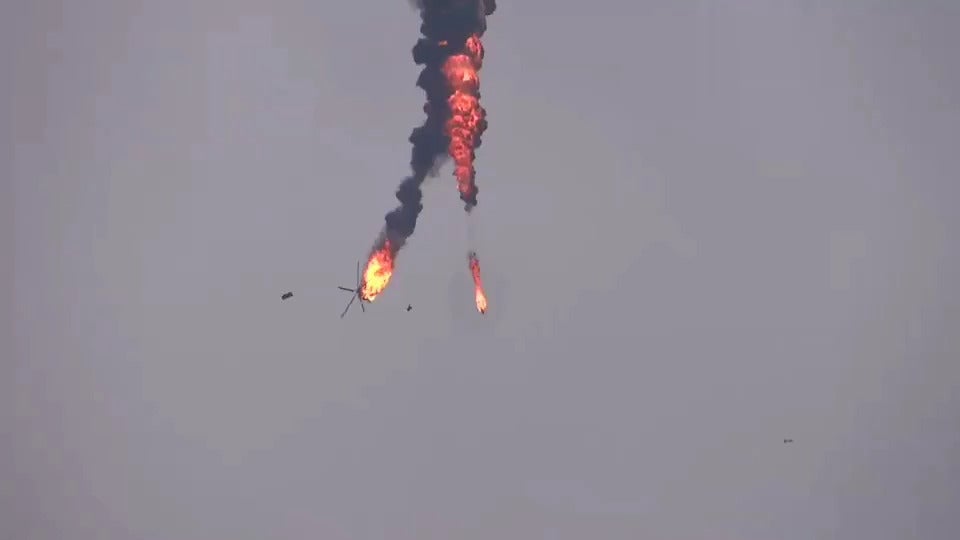Two Syrian Barrel Bombers Downed
Two Mi-8/17 helicopters used by the Syrian Air Force were downed in rapid succession during the Syrian Arab Army’s offensive on the Idlib Governorate. The first helicopter was shot down over Southern Idlib on 11 February, with the second downed over Western Aleppo on 14 February. There were no survivors among the crews of both helicopters.
The shootdowns were claimed by the rebel groups fighting against the SAA, although video uploaded following the shootdowns suggests that the helicopters were downed using MANPADS fired from the vicinity of Turkish Army positions, raising the possibility that Turkish military units may have been responsible for, or at least supervised, the engagements.
Barrel bombs are among the most infamous weapons used in the Syrian Civil War, their crudeness allowing for easy manufacture and aerial deployment by regime forces. The same crudeness also means that their inaccuracy is such that they are exclusively used against civilian dwellings or infrastructure in opposition held territory, in a bid to render territory literally uninhabitable for civilians.
The effects of barrel bombing attacks are exacerbated by rebel forces’ inability to strike back against the helicopters deploying them. As the videos of the shootdowns demonstrate, the flight patterns of a barrel bomber makes it a compliant target, but the US vetoed efforts to supply rebels with the ability to defend civilians against them. While nominally done out of fear of MANPADS proliferation in the region, members of the Obama administration later revealed that it was done to “ensure” that the regime would be brought to negotiate instead of outright collapsing following military defeat. This was also due to ongoing negotiations over the Joint Comprehensive Plan of Action, with the Obama administration believing that a potential failure of Iranian efforts to ensure the Assad regime’s continued rule would torpedo the negotiations.
Nevertheless, rebels were able to capture some MANPADS owing to endemic overstocking of regime bases captured, which gave rebel forces the majority of their materiel, including ATGMs that would go on to be used to great effect. The MANPADS, however, were largely in poor condition, limiting their ability to be used, if usable at all.
Turkish supply of MANPADS would be a major development, although one that has likely come far too late. The Turkish military has been steadily building up its presence in Idlib ever since the beginning of the offensive, although Turkish forces have yet to engage in direct combat despite regime and Russian airstrikes on Turkish military convoys and the siege of multiple Turkish observation posts nominally set up to monitor a “de-escalation” deal.
The offensive has already resulted in the displacement of over 900,000 civilians, many of which are already displaced from other parts of Syria. The United Nations has described the displacement as the “biggest humanitarian horror story of the 21st Century” with ever worsening conditions for those displaced. However, international apathy seems to guarantee no respite for civilians caught in the crossfire, with even the United Nations refusing to name the guilty party despite the overwhelming weight of evidence.

